Phototherapeutic keratectomy shows promise in newborns
With the necessary precautions and technical adjustments, the procedure may be an alternative to corneal transplantation.
 Michele Fortunato |
Phototherapeutic keratectomy can successfully treat superficial corneal opacities in young children, according to a pediatric ophthalmologist in Rome.
“In selected cases, this technique can be a good alternative to corneal transplantation, avoiding the surgical problems and the high risk of rejection that keratoplasty has in these young patients,” Michele Fortunato, MD, said.
With the necessary precautions and technical adjustments, the procedure can easily be performed in the early days after birth.
“Children with corneal opacities should undergo surgery as early as possible to avoid amblyopia,” he said. “Retinal fixation and the cortical visual response develop in the early months of life, and postponing the treatment would jeopardize the possibility of developing normal vision.”
Cutting an epi-LASIK flap is the best preparation for the treatment, according to Dr. Fortunato.
“It avoids the use of alcohol, and at the same time, it allows a fast recovery with less use of cortical steroids,” he said.
All drugs are potentially more toxic in young eyes, and cortical steroids, in particular, require constant IOP monitoring.
“Not an easy task, since general anesthesia is the only way of measuring IOP in very young patients,” Dr. Fortunato noted.
If there are no facilities for epi-LASIK, LASEK can be performed in an attempt to preserve flap viability as much as possible, he said.
Cooling essential
Once the epithelial flap has been opened, the underlying cornea is cooled for 30 seconds with special copper discs, previously frozen at –3° C, Dr. Fortunato said.
By reducing the temperature in the treatment area, the effects of the excimer laser will be less traumatic, and there will be less chance of developing haze.
“This technique is a simple, effective and harmless alternative to the use of mitomycin-C. It can be used in adults as well, but it is particularly useful in young eyes, where mitomycin-C is particularly toxic,” Dr. Fortunato said.
The smoothing treatment is then carried out. Pachymetry is performed intraoperatively to prevent the risk of ablating too much tissue, which causes uncontrolled refractive changes. A corneal bed of at least 380 µm should be left, he said.
“It’s better to leave some opacity, rather than ablating too much,” Dr. Fortunato said.
A second cooling treatment is performed at the end of the phototherapeutic keratectomy (PTK) procedure, and the epithelial flap is repositioned over the treatment area. Finally, a therapeutic contact lens is applied to reinforce the barrier effect of the flap to prevent inflammation and postoperative haze.
Protective contact lenses must be applied in infants and left in place for at least 1 week.
“In some cases, infants may need sedation to go through this delicate postoperative period. Sedation may also be necessary at the time of removing the therapeutic contact lens, which can be an awkward maneuver in the eye of a restless child,” Dr. Fortunato said.
Epi-LASIK is the best option for older and more cooperative children because they can be treated under topical anesthesia. They also understand that they should not rub their eyes after surgery.
“Suction might give them a few moments of unpleasant feeling, but at least you are sure that the eye won’t move,” he said.
Postoperative treatment encompasses topical antibiotics, cortical steroids and artificial tears. Age makes no difference, but the treatment can be discontinued earlier after epi-LASIK than after LASEK or PRK. After removal of the contact lens, Dr. Fortunato administers a beta-blocker to counteract the effects of cortical steroids on IOP.
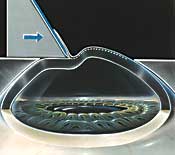 | 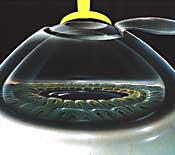 |  |
The epi-LASIK flap is performed to uncover the treatment area. | Corneal cooling and intraoperative pachymetry are performed. | |
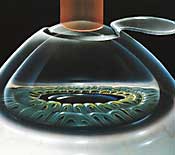 | 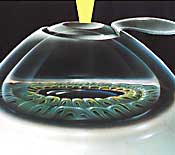 | 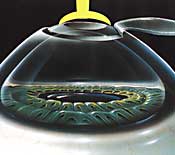 |
The smoothing PTK procedure is performed. | Post-PTK pachymetry and corneal cooling are carried out. | |
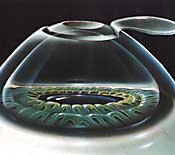 |  |
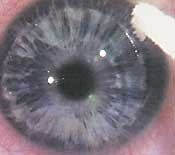 |
| The flap is repositioned and a therapeutic contact lens is applied. Images: Fortunato M | ||
Patients’ results
PTK requires careful patient selection. The opacity must be fairly superficial, reaching no farther than the first stromal layers. Ultrasound biomicroscopy or confocal microscopy can help evaluate the depth of the opacification, Dr. Fortunato said.
So far, he has treated 14 patients, ranging in age from 9 months to 14 years.
The first case was treated in 2001 and has a follow-up of more than 6 years. The youngest baby now has a follow-up of 15 months.
One patient, who underwent surgery for congenital cataract in the right eye at the age of 4 years, was injured in the same eye at the age of 12. She had corneal leukoma with a visual loss from 20/20 to 20/200, he said.
In December 2002, she underwent PTK with LASEK under topical anesthesia. Postoperative vision in the right eye improved to 20/32, achieving about 20/25 with a contact lens.
Another 14-year-old patient had facial trauma of the eyelid and corneal injuries. Refraction was +2 D with an irregular astigmatism and central corneal thinning. Visual acuity was 20/200, Dr. Fortunato said.
Customized PTK with LASEK was performed in 2005 under topical anesthesia. After surgery, refraction was –2 D at 170°, visual acuity improved to 20/50, achieving 20/32 with a cosmetic contact lens.
Remarkable results were also obtained in a 9-month-old patient, he said.
“Three days after birth, this baby had been operated on for congenital heart disease (left heart syndrome). The long exposure to general anesthesia was probably the cause of keratopathy and central corneal opacity in the left eye. Visual evoked potentials revealed the progressive development of amblyopia in the left eye,” Dr. Fortunato said.
Ultrasound biomicroscopy and confocal microscopy showed that the opacification did not reach farther than the more superficial stromal layers. At the age of 9 months, a gradual PTK with PRK using general anesthesia was attempted, he said.
Good refractive outcomes were achieved without significant anisometropia. After the operation and the amblyopia treatment, visual evoked potentials at 15 months were comparable in both eyes.
“Most of these patients were candidates for corneal transplantation,” Dr. Fortunato said. “PTK allowed us to offer them an alternative that was less invasive, worked well and is stable in the long term. Corneal grafts have a high rate of rejection in young eyes and almost invariably lead to a traumatic series of failures. They should be limited to full thickness corneal leukomas.”
For more information:
- Michele Fortunato, MD, can be reached at Via Polibio 4, 00136 Rome, Italy; +39-06-39742614; e-mail: micfortunato@hotmail.com.
- Michela Cimberle is an OSN Correspondent based in Treviso, Italy, who covers all aspects of ophthalmology. She focuses geographically on Europe.
